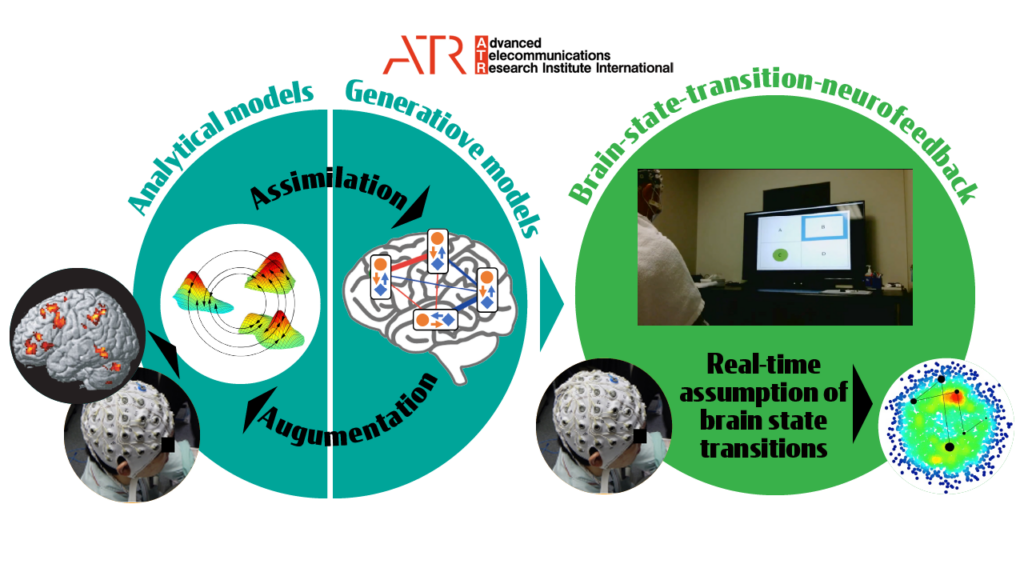Development of technology to visualize transitions in brain dynamics

Quantifying brain state transitions by machine learning
In our project, we hypothesize that the state transition of mind can be regarded as that of the attractors of brain non-linear dynamics. In this sub-project, we will develop methods to quantify brain state transitions by combining model-driven generative models and data-driven analytical models through data assimilation and augmentation. By constructing an algorithm for estimating brain state transitions from EEG through brain simulators and EEG/fMRI data analysis, we will contribute to the development of the real-time visualization system of brain states.

Real-time visualization of brain states
How can I see the patterns of my mind that are obvious to me? Is there a strict connection between the state of my mind and the state of my brain? If I train my mind, will my brain change, and if I train my brain, will my mind change? Meditation, a tradition of Eastern philosophy, is said to have aimed rigorously to capture the mind. Today, however, we have a better understanding of the brain and strong support from machines. Therefore, we thought that the moon-shoot we should aim for is to reach "the state of nirvana," which has been considered to be difficult to attain. How can my mind be changed by using a machine to capture the nonlinear dynamics of the brain and adjusting it based on the feedback? How would the state transitions of the brain, which express stability and dynamism, peacefulness and compassion, look like? We will challenge these difficult questions as one team, transcending the boundaries of the humanities and sciences.

